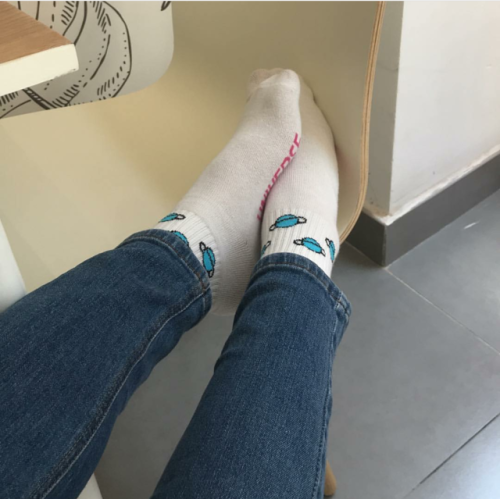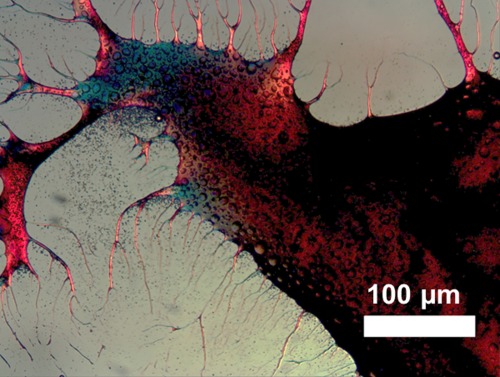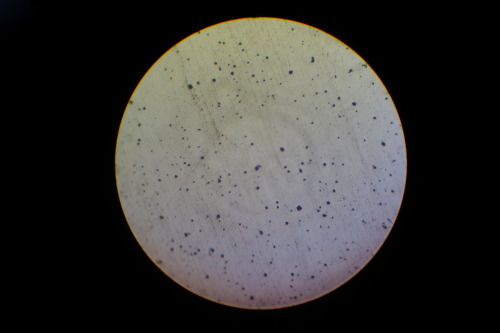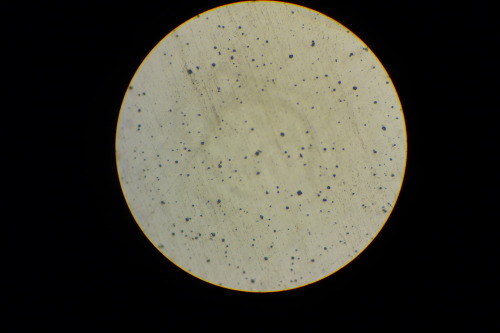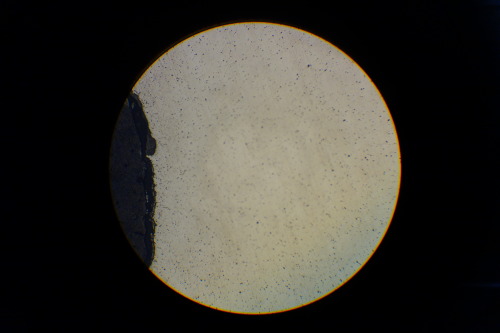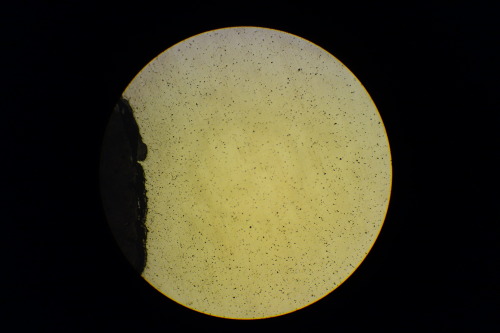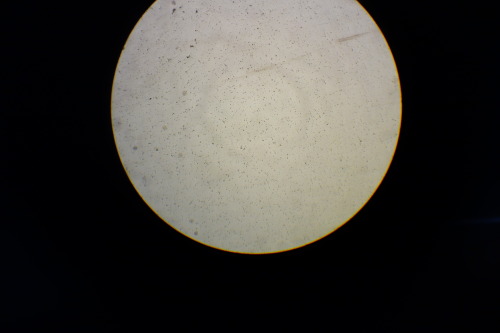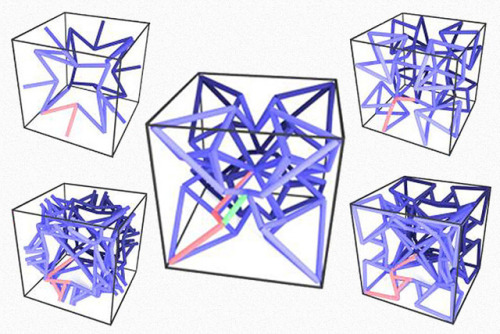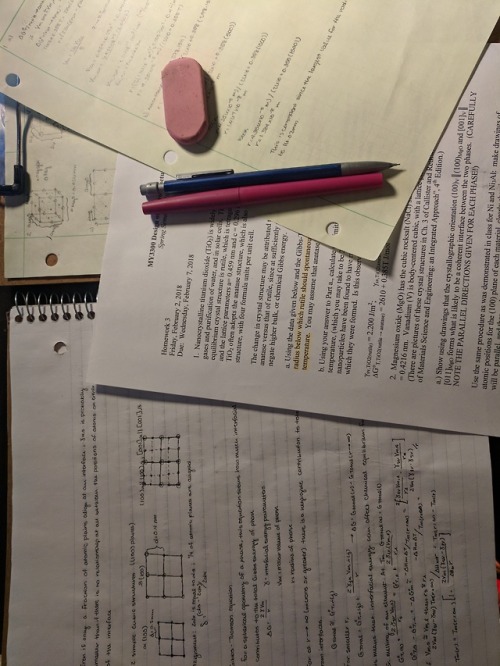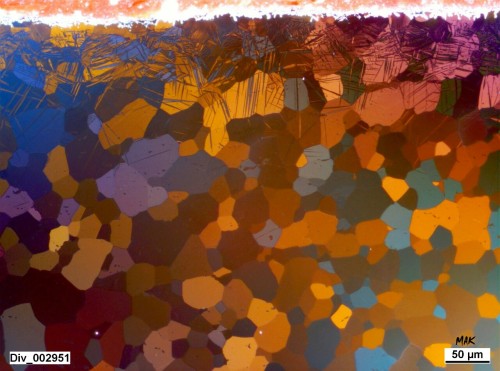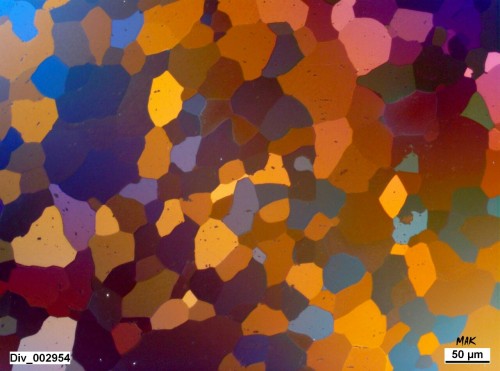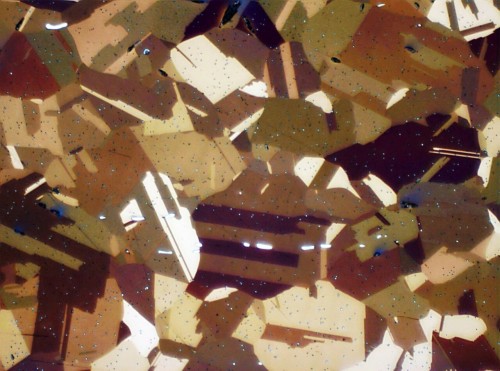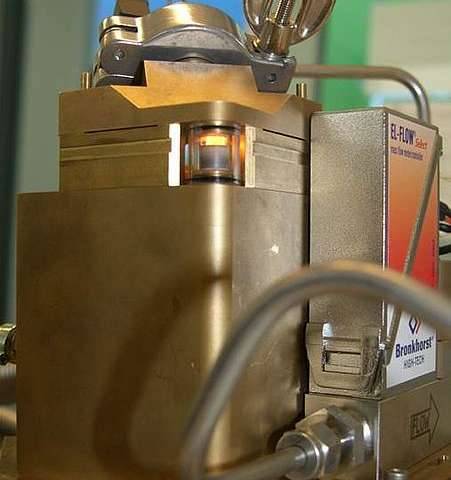#microstructures
My new MATE shirt, for those that aren’t MatEs the microstructure on the shirt is Pearlite, which is often mistaked as a phase when it is actually 2 phases in a llamelar structure(ferrite+cementite).
Sorry about squinting it was really bright today.
Post link
Al 75, Cu 25 (wt%), hypoeutectic alloy
Processing: Sand cast
[…]
Sample preparation: Etched in sodium hydroxide solution
Technique: Reflected light microscopy
Length bar: 40 μm
Further information: The micrograph shows primary Al dendrite arms (white). The dendrite trunk has been intersected at an angle by the plane of polishing to give the observed morphology. Between the dendrites is the Al - CuAl2 eutectic. Initially dendrites would have formed from the liquid, the regions between the dendrite arms known as the mushy zone transforming to a eutectic solid (L to Al + CuAl2). These two phases form cooperatively as neighbouring lamellae with the lateral diffusion of material across the growing interface. The relative amounts of the two phases (Al and CuAl2 ) within the eutectic are determined by applying the Lever Rule at the eutectic temperature.
Contributor: Prof T W Clyne
Organisation: Department of Materials Science and Metallurgy, University of Cambridge
Post link
The Effects of Hot Isostatic Pressing of Platinum Alloy Castings on Mechanical Properties and Microstructures http://www.technology.matthey.com/article/59/3/207-217/
Post link
Scientists discover new field affecting metals solidification
A fundamental discovery that alters our current understanding of how metals solidify and form crystalline patterns may help lead to better control of casting and welding processes. It also explains how snowflakes and many mineral patterns form naturally.
Reexamining data from his 20-year-old NASA experiment involving the repeated freezing and melting of high-purity materials in microgravity, Martin Glicksman, research professor in materials science and the Allen Henry Chair at Florida Institute of Technology, working with Kumar Ankit at the School of Matter, Transport and Energy at Arizona State University, discovered the way nature guides formation of complex patterns in materials that crystallize.
Glicksman discovered an energy field affecting all crystallizing substances, which he labeled the bias field that he believes is nature’s way of guiding cellular and branching dendritic microstructures that form during solidification of most metals and alloys.
“In the last phases of melting, needle-like crystals suddenly changed to spheres, and so for the first time ever, as we watched stationary particles melting in microgravity and observed their rather remarkable shape change,” Glicksman said.
Post link
SCARY STORIES TO TELL IN THE LAB
This image may look torn from the pages of a horror novel, but it actually depicts a possible new manufacturing method for electronic devices that work with living tissues. A team at Georgia Tech is studying the use of protein biofilms to direct the orderly formation of semiconducting polymer chains. Greater order in the chains could mean better and more predictable electronic properties for devices such as biocompatible sensors or electrodes. The researchers mixed poly(3-hexylthiophene) with a fungal protein called cerato-ulmin in the solvent 1,2,4-trichlorobenzene. As the proteins assembled into biofilms, the polymer collected in stable microstructures (dark areas above). These structures over time formed spindly branches, which slowly budded to release polymer-containing capsules. The team is now working on understanding and controlling the details of this process.
The resemblance to Stephen Gammell’s illustrations from the book series “Scary Stories to Tell in the Dark” is a happy accident.
Credit:Chem. Mater. 2015, DOI: 10.1021/acs.chemmater.5b04192
Post link
The study of metallurgy and materials require of the knowledge of microstructures. Here is a microstructure of a non-chemical-attacked metal (steel1010). We can see absolutely nothing but little dots. This remarks the importance of chemical attacks to unveil the microstructure of metals.
Post link
Engineers Develop Automated Process for Discovering Optimal Structure for Metamaterials
For decades, materials scientists have taken inspiration from the natural world. They’ll identify a biological material that has some desirable trait — such as the toughness of bones or conch shells — and reverse-engineer it. Then, once they’ve determined the material’s “microstructure,” they’ll try to approximate it in human-made materials.
Researchers at MIT’s Computer Science and Artificial Intelligence Laboratory have developed a new system that puts the design of microstructures on a much more secure empirical footing. With their system, designers numerically specify the properties they want their materials to have, and the system generates a microstructure that matches the specification.
The researchers have reported their results in Science Advances. In their paper, they describe using the system to produce microstructures with optimal trade-offs between three different mechanical properties. But according to associate professor of electrical engineering and computer science Wojciech Matusik, whose group developed the new system, the researchers’ approach could be adapted to any combination of properties.
“We did it for relatively simple mechanical properties, but you can apply it to more complex mechanical properties, or you could apply it to combinations of thermal, mechanical, optical, and electromagnetic properties,” Matusik says. “Basically, this is a completely automated process for discovering optimal structure families for metamaterials.”
Post link
2/5/18
Microstructures homework and progress on a report for my material design class about Brinell, Vickers macrohardness, and Rockwell B. There is never a dull moment.
Post link
Forging blank (Titanium, grade 1): taken pictures with polarized light || on the left side: oxygenated edge area (needles visible) || on the right side: regular microstructure in the core area
Post link
Austenitic microstructure with small amount of Delta-ferrite (on the left side: etched conventionally || on the right side: etched with Beraha)
Post link
Researchers gain a better understanding of the transformation of steel
Heating iron can alter its structure and is one of the methods for making various types of steel with different properties. That process is similar to the formation of frost flowers: one iron crystal structure transforms into another at a nucleus point, and the process expands further from that point. This type of nucleation in materials has the largest impact on their final properties, but is still the least understood in the field of metallurgy. For example, we still know little about how and where exactly this nucleation starts. Researchers at TU Delft have now shed new light on this subject in their publication ‘Preferential Nucleation during Polymorphic Transformations’ in Scientific Reports(Nature) of Wednesday 3 August.
The researchers demonstrated this nucleation process live by heating an iron sample to 1,000 degrees in a specially produced furnace at the European Synchrotron Radiation Facility in Grenoble, and monitoring the transformation process using X-rays. In this way, they were able to identify the places and their properties that were the most likely starting points for the nucleation process of the transition from ferrite to austenite.
Post link
Novel photoresist enables 3D printing of smallest porous structures
Researchers of the cluster of excellence 3D matter made to order expand possibilities of two-photon microprinting
Researchers of Karlsruhe Institute of Technology (KIT) and Heidelberg University have developed a photoresist for two-photon microprinting. It has now been used for the first time to produce three-dimensional polymer microstructures with cavities in the nano range. In Advanced Materials, the scientists involved in the joint Cluster of Excellence 3D Matter Made to Order report how porosity can be controlled during printing and how this affects light scattering properties of the microstructures.
Photoresists are printing inks used to print smallest microstructures in three dimensions by so-called two-photon lithography. During printing, a laser beam is moved in all spatial directions through the initially liquid photoresist. The photoresist hardens in the focal point of the laser beam only. Little by little, complex microstructures can be built in this way. In a second step, a solvent is used to remove those areas that were not exposed to radiation. Complex polymer architectures in the micrometer and nanometer ranges remain.
Two-photon polymerization – or two-photon microprinting based on this process – has been studied extensively for some years now, in particular as regards the production of microoptics, so-called metamaterials, and microscaffolds for experiments with single biological cells. To expand the spectrum of applications, new printable materials are required. This is the point of departure of the scientists involved in the Cluster of Excellence 3D Matter Made to Order (3DMM2O) of KIT and Heidelberg University. “With the help of conventional photoresists, it was possible to print transparent, glassy polymers only,” says Frederik Mayer, physicist of KIT and main author of the study. “Our new photoresist for the first time enables printing of 3D microstructures from porous nanofoam. This polymer foam has cavities of 30 to 100 nm in size, which are filled with air.”

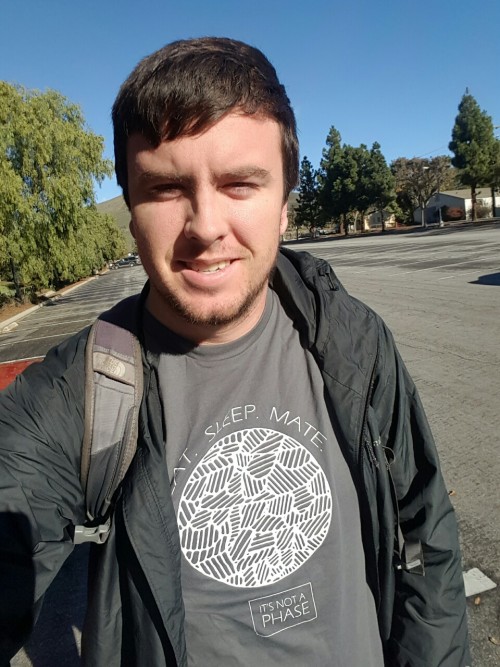
![Al 75, Cu 25 (wt%), hypoeutectic alloy Processing: Sand cast[…]Sample preparation: Etched in Al 75, Cu 25 (wt%), hypoeutectic alloy Processing: Sand cast[…]Sample preparation: Etched in](https://64.media.tumblr.com/79ecb73957bcb39176b5d6c751534161/tumblr_ovkv9cYTp91u00si6o1_500.jpg)
